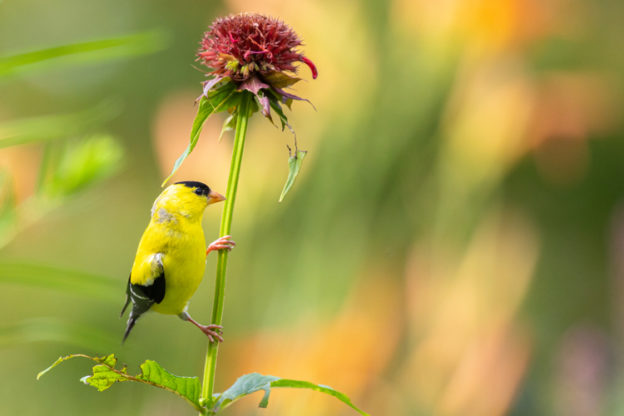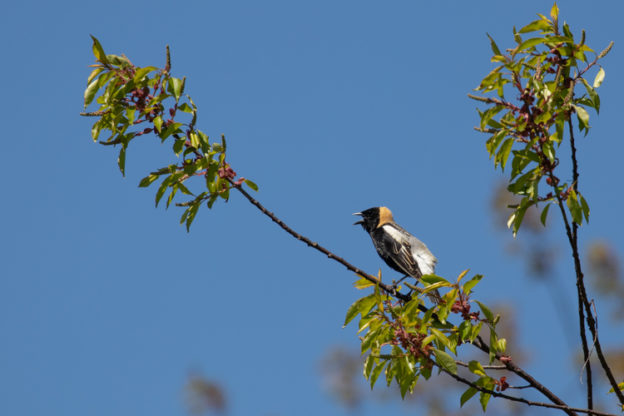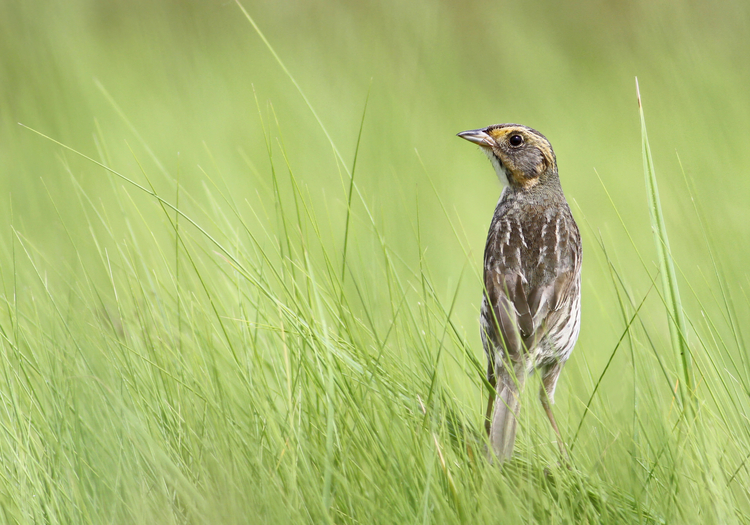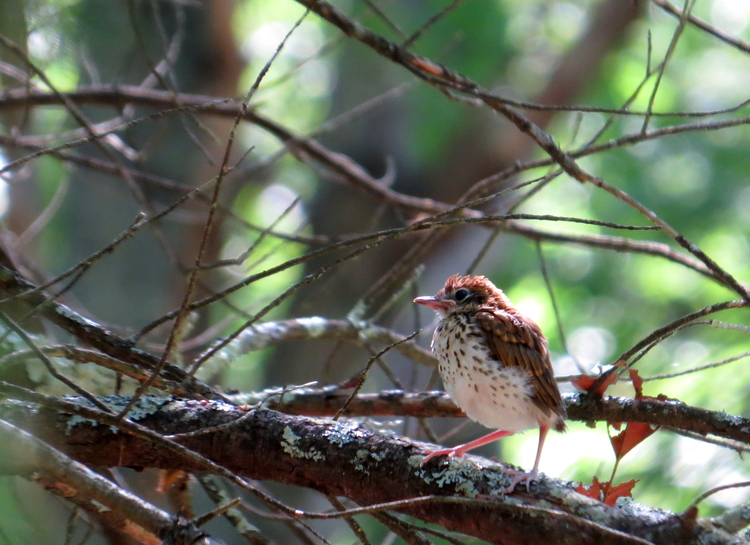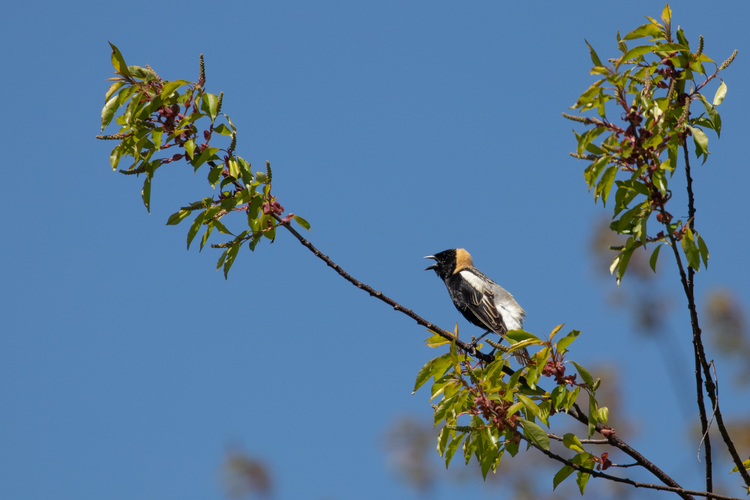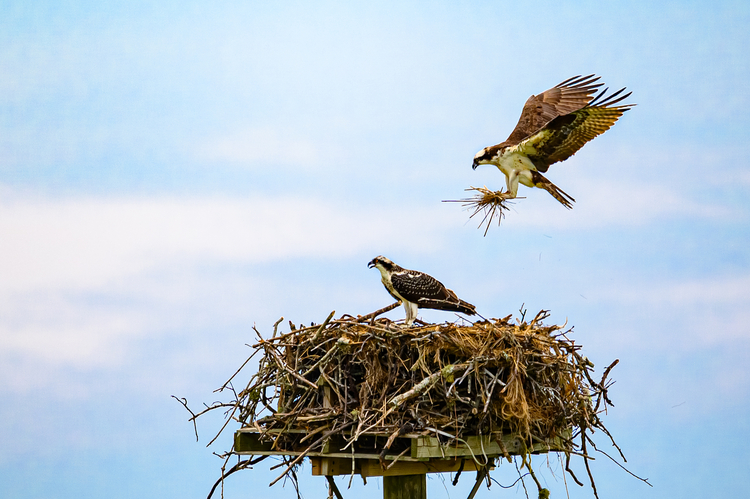A flash of yellow flies by, and with only a quick glance, it’s hard to tell what it is. Was it a warbler or a finch? With so many brightly colored birds, it’s easy to get your species mixed up. With a few tips, you can tell one yellow bird from another.
American Goldfinch
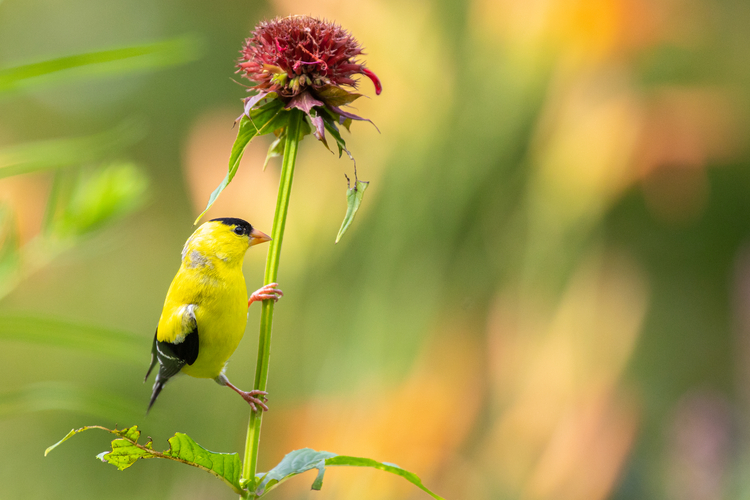
One of the most common yellow birds you will probably see is the American Goldfinch. Breeding plumaged males are yellow, lined with black wings, tail, and cap. In the colder months, they match their female counterparts with a brown plumage. Goldfinches are frequent flyers to birdfeeders, so keep an eye out for their golden feathers.
There are a couple of ways to identify a goldfinch. The first is to look at how they fly. Goldfinches have a recognizable “bouncing” style of flight because of their tendency to hold their wings tight against their body for a second or two between bouts of flapping. You’ll also notice that they are very small, and like many other finches, have a short conical-shaped beak. Listen to the song of the American Goldfinch with a distinctive four-note flight call given as they bounce through the air: po-ta-to chip, po-ta-to chip.
Scarlet Tanager
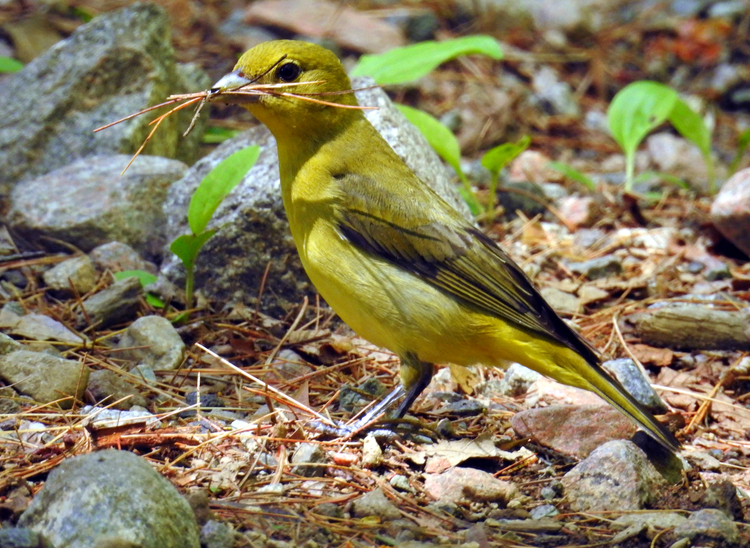
You may be wondering why we are including a blazing red bird on our yellow bird list, but that’s because females are actually a dull yellow. Non-breeding males are a similar shade to the females, but they have black wings instead of olive. Like the goldfinch, the tanagers have wings darker than their body, but they are bigger and bulkier than finches.
Scarlet Tanagers reside high in the canopy of oak forests. Although their vibrant feathers stick out against the green of the trees, you are much more likely to hear them. The male’s song is a sing-song similar to an American Robin, but with a burry quality. Both males and females have a distinct chick-burr call.
Common Yellowthroat

Just like their name suggests, the Common Yellowthroat has a dazzling yellow neck and breast with an olive backside. Like all warblers, it has a thin, pointed bill. If you think you see one, try to find the distinctive black mask that males have, earning them the nickname the yellow bandit. They typically stick low to the ground in fields and marshes, looking for insects to snack on.
Yellowthroats are one of the only warblers to nest in an open marsh from the east coast to the west coast. As you enjoy the summer weather, you’ll know a male is close by when you hear a low witchety-witchety-witchety song.
Prairie Warbler

Although Massachusetts isn’t known for its prairies, the beautiful Prairie Warbler does breed here. Shrubbery clearings in Cape Cod, southeastern Massachusetts, and even the powerline across the state, make a perfect home for these golden warblers.
Males are an outstanding yellow with black streaks on their flanks. Look for a dark black stripe on their eyes and a semi-circle directly below. Prairie Warblers have a series of buzzy rising calls that echo through the shrubs.
Start Practicing
The yellow doesn’t stop there! Other birds like Pine Warblers, Yellow-rumped Warblers, and Yellow Warblers come in all shades of gold and yellow. Take a look at our Breeding Bird Atlas 2 to start learning more species, and put your knowledge into practice during one of our birding programs.


